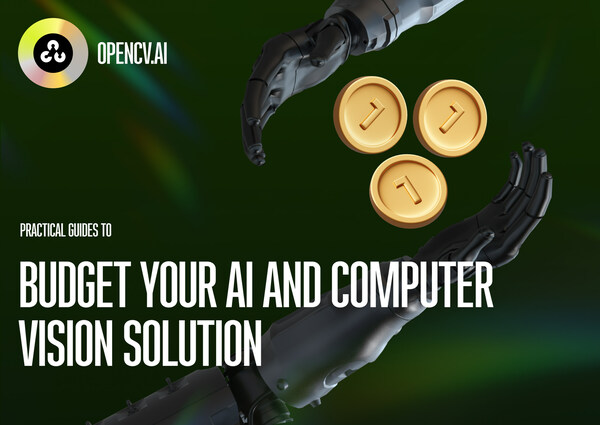PALO ALTO, Calif., Jan. 16, 2024 /PRNewswire/ -- AI and Computer Vision are revolutionizing business operations. Unsurprisingly, AI companies took center stage at CES 2024, the annual consumer electronics trade show in Las Vegas. When OpenCV.ai attended the show, many companies approached them on what it takes to automate or innovate using AI solutions – focusing on scalable technologies, costs, hardware selection, and technical support.
In response to widespread interest, OpenCV.ai has launched a series of articles to guide entrepreneurs and enterprises, in exploring Computer Vision solutions. These articles are designed to aid in making informed decisions, with a focus on optimizing development and operational costs.
Most AI solutions start with data input and selecting the suitable hardware. However, it is not clear which is the best hardware for a particular business task in terms of budget. The first article discusses hardware essentials and offers insights on how to:
- Identify the right camera for specific Computer Vision needs.
- Choose the optimal computing platform for a given project.
- Understand the significance of network connections and power supply in AI development.
Camera Selection in Computer Vision
Computer Vision involves processing images acquired by algorithms using an input camera. The selection of a camera is crucial, dependent on the specific business objectives. Important aspects include camera resolutions for applications like license plate recognition, high framerates, and shutter types for capturing fast-moving objects, as seen in sports analysis. Depth Estimation techniques are also discussed, relevant to a variety of applications from drone navigation to face recognition systems.
Computing Platforms
Once the appropriate camera (or data sources) is picked, it's essential to determine the processing hardware for the Computer Vision and AI algorithms. Depending on the task conditions, different devices may be suitable.
The article discovers the optimal devices for applications requiring real-time operation. It also delves into the capabilities of mobile platforms. Finally, many practical solutions use a hybrid approach between on-edge, on-premise, and cloud-hosted solutions, balancing latency, scalability, and costs based on computational needs.
Network and Power Efficiency
Factors such as network bandwidth and battery efficiency affect the speed and consistency of AI solutions. The articles address scenarios involving data transmission over the Internet and potential network losses, focusing on the recovery of lost data.
The pivotal roles of network connectivity and power optimization in AI integration are highlighted, emphasizing efficient data transfer, stable connections, and the energy efficiency of AI solutions, especially in power-limited environments.
Simplifying the Complexities of AI Solutions
"The development of AI solutions is a multi-layered process — each component plays a critical role in determining the solution's overall performance, scalability, and cost-effectiveness. Our goal is to simplify decision-making processes with these practical guides," said Anna Kogan, CEO at OpenCV.ai.
Explore the hardware choices affecting the budget of an AI solution in Computer Vision by reading the full article here.
Media Contact:
Anna Kogan
35797882151
371377@email4pr.com
SOURCE OpenCV.ai


